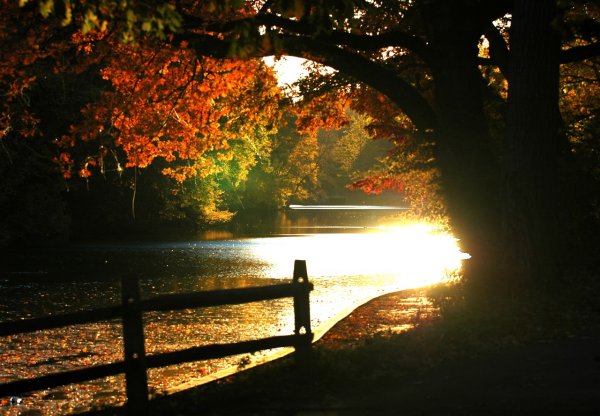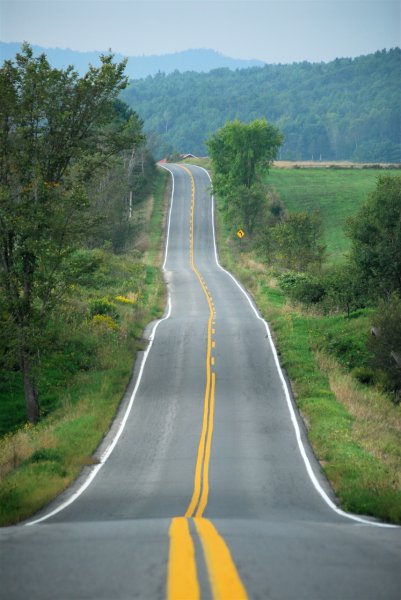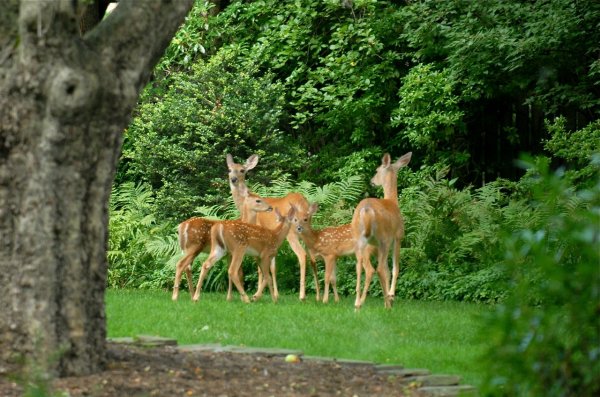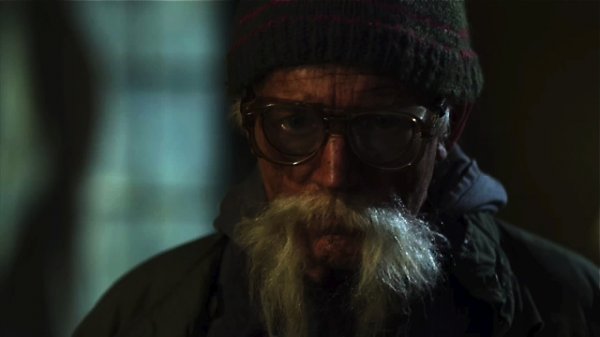Bruce, I don't specialize in indoor photography. That said, do you like the look of your place with the existing lighting you have? If so, time permitting I would be happy to take some shots of your studio and see if you like them. Alternatively, PM me with a link to the pictures others took and I can try to make them look good.
WBF Photography Tips!
- Thread starter amirm
- Start date
You are using an out of date browser. It may not display this or other websites correctly.
You should upgrade or use an alternative browser.
You should upgrade or use an alternative browser.
Thanks Amir.. The lighting is fine as far as I know. There is plenty of it. Actually had a lighting "designer" do the layout.
PM sent...
PM sent...
I find it totally non-intuitive too, but need to know how to use it because it's the industry standard. Just got CS5 which I'm told improves some interface issues, we'll see.
I'll post some pics w/info when I'm back home a few days from now.
I subscribe to www.lynda.com They have tutorials of every software you can think of. I'm all the time using dozens of different software and the tutorials take you from novice to super advanced. I think the Photoshop tutorial is over 100hr.!!
Photoshop Tutorial
Steve Williams
Site Founder, Site Co-Owner, Administrator
terrific link Bruce
Yes Steve. It's especially cool if you have dual monitors. You can have the tutorial on one monitor and your workspace so you can follow along on the other monitor. They have audio and video classes, OS classes and office tutorials on Word/Excel/Acrobat...etc. It's a business expense for me!!
Watch Your Background!
Another Aurthur Morris tip: don't just pay attention to the foreground subject but look for an uncluttered background. That can come from blurring the background, avoiding busy backgrounds, or creative use of lighting so that the subject is much brighter as in this example:
Canon 1D MK II, 400mm "DO" F4 lens, ISO 400, f4.0, 1/200sec

The above might look like it was shot in a studio with a black background but in reality, there is a lot of vegetation there. But a shaft of light over the subject causes the background to be much dark and hence, not distracting.
Here is a counter example which I salvaged but still not nearly as captivating:
Canon 1D MK II, 400mm "DO" F4 lens, ISO 100, f5.0, 1/600sec

What made me want to post this is the suffering I go through watching the morning programming on TV. Years ago they decided to put their studio on ground floor with windows open to general public. And worse yet, with monitors so that people could see what is being broadcast. That led naturally to people jumping up and down to be noticed on national TV. If there is something more distracting than cluttered background behind the talent in the studio is one that is moving! Realizing their mistake, they put some kind of sheer window covering but that only mitigates the issue partially. This is one time where violating the rule is a bad, bad thing.
Another Aurthur Morris tip: don't just pay attention to the foreground subject but look for an uncluttered background. That can come from blurring the background, avoiding busy backgrounds, or creative use of lighting so that the subject is much brighter as in this example:
Canon 1D MK II, 400mm "DO" F4 lens, ISO 400, f4.0, 1/200sec

The above might look like it was shot in a studio with a black background but in reality, there is a lot of vegetation there. But a shaft of light over the subject causes the background to be much dark and hence, not distracting.
Here is a counter example which I salvaged but still not nearly as captivating:
Canon 1D MK II, 400mm "DO" F4 lens, ISO 100, f5.0, 1/600sec

What made me want to post this is the suffering I go through watching the morning programming on TV. Years ago they decided to put their studio on ground floor with windows open to general public. And worse yet, with monitors so that people could see what is being broadcast. That led naturally to people jumping up and down to be noticed on national TV. If there is something more distracting than cluttered background behind the talent in the studio is one that is moving! Realizing their mistake, they put some kind of sheer window covering but that only mitigates the issue partially. This is one time where violating the rule is a bad, bad thing.
Steve Williams
Site Founder, Site Co-Owner, Administrator
Amir
Those photos especially the first one is absolutely a winner. Once again can you post the camera, lens, shutter speed and F-stop
Where did you take those photos. Simply breathtaking.
Those photos especially the first one is absolutely a winner. Once again can you post the camera, lens, shutter speed and F-stop
Where did you take those photos. Simply breathtaking.
Sorry Steve. I keep forgetting  . Just added them in.
. Just added them in.
As to where, that was shot at a tourist trap called Gatorland n Orlando Florida (http://www.gatorland.com/). As the name indicates, people go there to see alligators. What makes it a photography haven is that they have a huge pond where the Alligators live. Then there are trees surrounding the ponds. The birds go roost there since they get protection from Alligators eating most predators. Sadly, the protector turns on them once in a while, eating one of them! But in balance, they come out ahead. There is a nice walkway around the entire pond, including an observation tower.
The trick is to go there during the right season when the birds are in breeding plumage. They change color and develop those beautiful airy feathers. And for once, laws of science are in your favor in that this occurs during the dry winter season in Florida. So the weather is quite tolerable if not nice, especially in early morning light. I will talk more about the right time and place in future tips.
As to where, that was shot at a tourist trap called Gatorland n Orlando Florida (http://www.gatorland.com/). As the name indicates, people go there to see alligators. What makes it a photography haven is that they have a huge pond where the Alligators live. Then there are trees surrounding the ponds. The birds go roost there since they get protection from Alligators eating most predators. Sadly, the protector turns on them once in a while, eating one of them! But in balance, they come out ahead. There is a nice walkway around the entire pond, including an observation tower.
The trick is to go there during the right season when the birds are in breeding plumage. They change color and develop those beautiful airy feathers. And for once, laws of science are in your favor in that this occurs during the dry winter season in Florida. So the weather is quite tolerable if not nice, especially in early morning light. I will talk more about the right time and place in future tips.
Steve Williams
Site Founder, Site Co-Owner, Administrator
With wildlife photography the subject is often active and you don't have the luxury of taking multiple shots. If the subject is static, and I have the time, I look at the histogram and if it dictates, I will reduce or increase exposure manually using the exposure adjustment ring. I have rarely if ever used automatic bracketing mainly because it takes so much time to active and deactivate it. In the same amount of time I can check the histogram and take the right shot. If there were a button I could push and have it auto-bracket, I would use it all the time but there isn't.
Steve Williams
Site Founder, Site Co-Owner, Administrator
Amir, what is a "DO" lens
Diffractive Optics - it's a Canon lens that does not have chromatic aberration.
Hugely expensive
Here's how it works: http://www.dpreview.com/news/0009/00090604canon_400do.asp
It stands for "Diffractive Optics." http://www.canon.com/technology/canon_tech/explanation/do_lens.html. It is a way to make lenses smaller and lighter, oddly by cutting special groves in them. The 400mm DO F4 is about 25-30% lighter and smaller than if traditional technology was used.
Alas, the picture quality is compromised some. While I find the resolution excellent, the color tends to be on the cool side. And contrast is not as good. Both of these can be fixed on the computer but it is a downer. The other one negative which cannot be fixed is that out of focus highlights can look odd. I have had images ruined this way. Oh, I forgot to say these lenses are expensive to boot! Much more so than even high-end L series lenses from Canon. So you get less performance for more money all to save space and weight.
I use my DO lenses when weight and size are a major issue. I usually have a 300f2.8 or the 400f4 Do hanging on my left shoulder while I have the 500-600 f4 lens on tripod on my right shoulder or on the ground. This way, if something comes close I can shoot with the smaller lens. I also use them for hand holding flight shots. BTW, even though the DO makes thing slighter, this lens still weighs nearly 5 pounds. With camera, you are pushing 6+. Imagine walking all day with that on your left shoulder and 10+ pound contraption on the right shoulder! It certainly makes a man out of you .
.
Edit: oops. You guys beat me to it.
Alas, the picture quality is compromised some. While I find the resolution excellent, the color tends to be on the cool side. And contrast is not as good. Both of these can be fixed on the computer but it is a downer. The other one negative which cannot be fixed is that out of focus highlights can look odd. I have had images ruined this way. Oh, I forgot to say these lenses are expensive to boot! Much more so than even high-end L series lenses from Canon. So you get less performance for more money all to save space and weight.
I use my DO lenses when weight and size are a major issue. I usually have a 300f2.8 or the 400f4 Do hanging on my left shoulder while I have the 500-600 f4 lens on tripod on my right shoulder or on the ground. This way, if something comes close I can shoot with the smaller lens. I also use them for hand holding flight shots. BTW, even though the DO makes thing slighter, this lens still weighs nearly 5 pounds. With camera, you are pushing 6+. Imagine walking all day with that on your left shoulder and 10+ pound contraption on the right shoulder! It certainly makes a man out of you
Edit: oops. You guys beat me to it.
Alas, the picture quality is compromised some. While I find the resolution excellent, the color tends to be on the cool side. And contrast is not as good. Both of these can be fixed on the computer but it is a downer. The other one negative which cannot be fixed is that out of focus highlights can look odd. I have had images ruined this way. Oh, I forgot to say these lenses are expensive to boot! Much more so than even high-end L series lenses from Canon. So you get less performance for more money all to save space and weight.
Thanks!! I'm also a Canon user, and I've always lusted after the "green stripe". Now, with this I should be content with my red stripes
Here are a few pics, and I'll point out what I think is technically interesting about them as per our discussion:

Nikon D70, Nikkor 70-200mmVR @ 90mm, ISO 200, f4.5, 1/800, +.7EV exp comp
The D70 had maybe 7 stops of range it could handle, so I had to make a choice w/my exposure to favor either the shadow or highlights. A histogram has limited utility here. I let the highlights go which can be very natural. Even with more modern cameras that have more range, you have to make a choice. Other thing is the angle of light -- time of day, the backlit angle transforms this shot.

Nikon D200, Nikkor 18-200mmVR @ 135mm, ISO 250, f5.6, 1/80
This is all about focal length -- longer mm compressing the landscape in this case -- and trying to create depth in the frame, which is almost always a goal. This is accomplished thru composition, light and color. Would like to have gotten much further back w/a longer lens to further the effect, but wife and kids waiting in the car got impatient while daddy was lying in the middle of the road. I would encourage everybody to shoot a closeup of someone (face same size in frame) at both ends of their zoom. Note the effect on the face and the background, and how these elements interact. Shooting later in the day too would have helped too -- the road runs west (bottom to top) and shadow play along it would have accentuated the hilliness among other things.

Nikon D200, Nikkor 70-200VR @ 200mm, ISO 500, f2.8, 1/250
Saw this forming out my home office window -- would have like the subjects a bit closer so I could have blurred the background behind them some more, but they were not cooperative. Shot all the way open to do the best I could. Was looking to create depth with the foreground left tree and fg right bushes, it's all about layering -- I think it's a better picture than if framed them out. Agreed that wildlife generally looks best front lit.

RED camera rated at ISO200, Zeiss 85mm @ T2
This is a still from a movie I shot recently and illustrates (loosely) two concepts. One is Zettl's 'rule of thirds' for composition. If you divided the frame into horizontal and vertical thirds -- think a tic tac toe board supered over the frame -- your compositional element want to be along these lines. For closeups such as this, it usually means the point between the eyes roughly either the upper left or upper right 'crosshair' -- at this moment in the shot, the actor is a bit closer to center. The other notion is that the most pleasing frames contain roughly 30% white, 30% black, 40% in the middle. Our eyes/brain like contrast and it makes everything jump. Props to whoever can name the actor.

Nikon D70, Nikkor 70-200mmVR @ 90mm, ISO 200, f4.5, 1/800, +.7EV exp comp
The D70 had maybe 7 stops of range it could handle, so I had to make a choice w/my exposure to favor either the shadow or highlights. A histogram has limited utility here. I let the highlights go which can be very natural. Even with more modern cameras that have more range, you have to make a choice. Other thing is the angle of light -- time of day, the backlit angle transforms this shot.

Nikon D200, Nikkor 18-200mmVR @ 135mm, ISO 250, f5.6, 1/80
This is all about focal length -- longer mm compressing the landscape in this case -- and trying to create depth in the frame, which is almost always a goal. This is accomplished thru composition, light and color. Would like to have gotten much further back w/a longer lens to further the effect, but wife and kids waiting in the car got impatient while daddy was lying in the middle of the road. I would encourage everybody to shoot a closeup of someone (face same size in frame) at both ends of their zoom. Note the effect on the face and the background, and how these elements interact. Shooting later in the day too would have helped too -- the road runs west (bottom to top) and shadow play along it would have accentuated the hilliness among other things.

Nikon D200, Nikkor 70-200VR @ 200mm, ISO 500, f2.8, 1/250
Saw this forming out my home office window -- would have like the subjects a bit closer so I could have blurred the background behind them some more, but they were not cooperative. Shot all the way open to do the best I could. Was looking to create depth with the foreground left tree and fg right bushes, it's all about layering -- I think it's a better picture than if framed them out. Agreed that wildlife generally looks best front lit.

RED camera rated at ISO200, Zeiss 85mm @ T2
This is a still from a movie I shot recently and illustrates (loosely) two concepts. One is Zettl's 'rule of thirds' for composition. If you divided the frame into horizontal and vertical thirds -- think a tic tac toe board supered over the frame -- your compositional element want to be along these lines. For closeups such as this, it usually means the point between the eyes roughly either the upper left or upper right 'crosshair' -- at this moment in the shot, the actor is a bit closer to center. The other notion is that the most pleasing frames contain roughly 30% white, 30% black, 40% in the middle. Our eyes/brain like contrast and it makes everything jump. Props to whoever can name the actor.
Last edited:
Steve Williams
Site Founder, Site Co-Owner, Administrator
Steve Williams
Site Founder, Site Co-Owner, Administrator
Similar threads
- Replies
- 4
- Views
- 1K
- Replies
- 503
- Views
- 45K
- Replies
- 394
- Views
- 97K
- Replies
- 108
- Views
- 21K
| Steve Williams Site Founder | Site Owner | Administrator | Ron Resnick Site Owner | Administrator | Julian (The Fixer) Website Build | Marketing Managersing |

